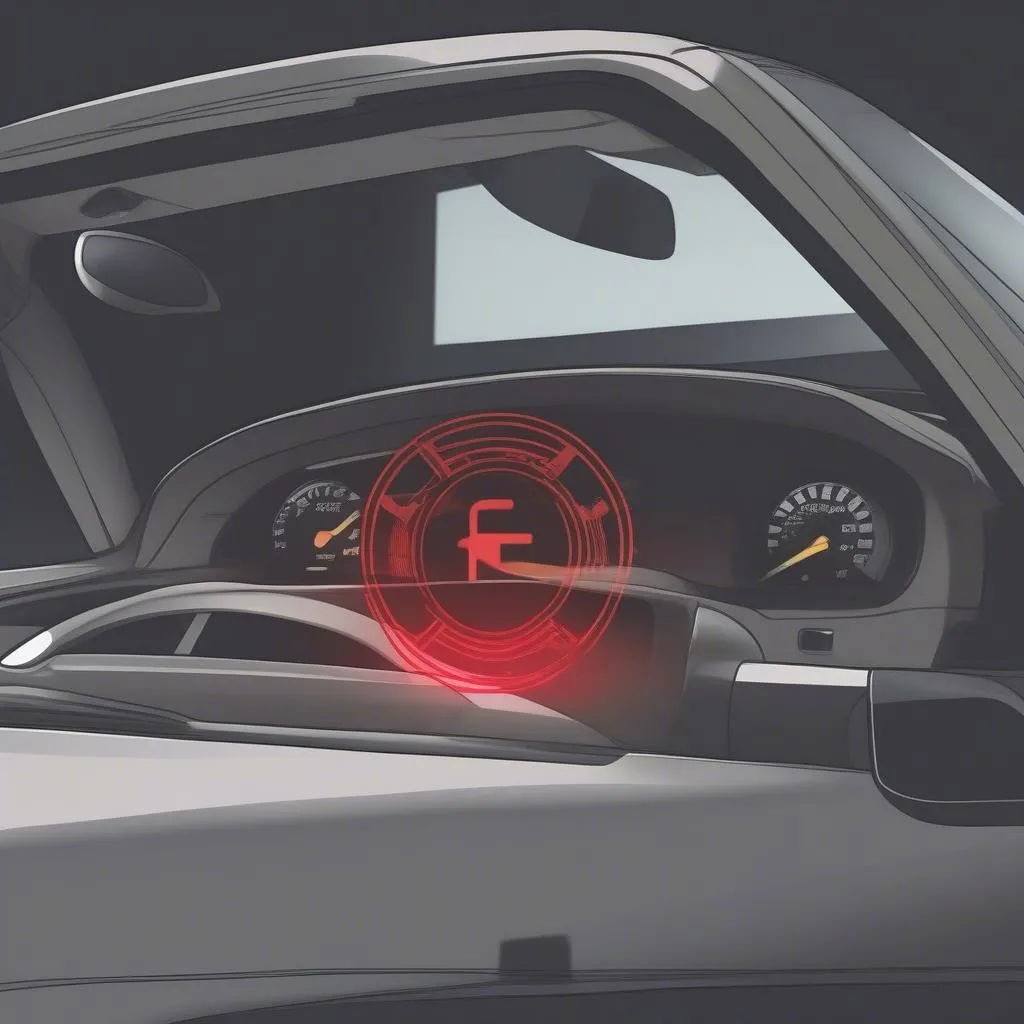The brake pad warning light on your Range Rover Sport is a crucial safety indicator. Understanding what triggers it and how to address it can save you from costly repairs and ensure your safety on the road. This guide dives into everything you need to know about the brake pad warning light on your Range Rover Sport, from simple fixes to more complex issues.
Understanding the Brake Pad Warning Light
The brake pad warning light is designed to alert you when your brake pads are worn down and need replacing. Ignoring this warning can lead to damage to your rotors, calipers, and other brake components. This can result in significantly higher repair costs and potentially dangerous driving conditions.
discovery sport brake pad warning light
Why is my brake pad warning light on?
The most common reason for the brake pad warning light to illuminate is worn brake pads. However, there can be other contributing factors:
- Worn brake pad sensor: A small sensor embedded within the brake pad triggers the warning light when the pad reaches a certain thickness.
- Damaged brake pad sensor wire: A frayed or broken wire leading to the sensor can also trigger the light, even if the pads are still good.
- Low brake fluid: Although a separate warning light usually indicates low brake fluid, it can sometimes be linked to the brake pad warning light.
- Faulty brake caliper: A seized or malfunctioning caliper can cause uneven brake pad wear and trigger the warning light prematurely.
Diagnosing the Issue
How can I check my brake pads? You can visually inspect your brake pads by looking through the spaces between the wheel spokes. You should see a significant amount of pad material remaining. If you’re unsure, it’s always best to consult a qualified mechanic.
2008 range rover sport supercharged red parking brake warning light
What to do when the light comes on
- Check your brake fluid level: Ensure the brake fluid reservoir is full. If it’s low, top it off with the correct fluid type.
- Inspect your brake pads: If you’re comfortable doing so, check the thickness of your brake pads.
- Consult a professional: If you’re unsure about anything, it’s always best to take your Range Rover Sport to a qualified mechanic for a proper diagnosis.
“Regular brake inspections are crucial for maintaining the safety and performance of your vehicle,” says John Smith, a certified automotive technician with over 20 years of experience. “Ignoring warning lights can lead to more extensive and costly repairs down the line.”
Replacing Brake Pads on a Range Rover Sport
2015 range rover sport brake pad warning light
Replacing brake pads is a job best left to professionals, especially on a sophisticated vehicle like the Range Rover Sport. However, understanding the process can help you appreciate the importance of regular maintenance.
Resetting the Brake Pad Warning Light
After replacing the brake pads, the warning light may need to be manually reset. This typically involves using a diagnostic tool to clear the fault code.
“Using quality brake pads and having them installed correctly is essential,” adds Sarah Jones, a lead technician at a specialized Land Rover repair shop. “This ensures optimal braking performance and longevity.”
Conclusion
The brake pad warning light on your Range Rover Sport is a vital safety feature. Addressing the underlying issue promptly ensures the safety and performance of your vehicle. While simple checks can sometimes resolve the problem, consulting a qualified mechanic is always recommended for a thorough diagnosis and repair. Remember, maintaining your brakes is not just about avoiding costly repairs; it’s about ensuring your safety and the safety of others on the road.
range rover sport check brake pads warning
FAQ
- How often should I replace my brake pads? Brake pad lifespan varies depending on driving habits and conditions, but generally, they should be inspected every 10,000-12,000 miles.
- Can I drive with the brake pad warning light on? While you can technically still drive, it’s strongly advised against it. Continuing to drive with worn brake pads can lead to further damage and potentially dangerous driving situations.
- How much does it cost to replace brake pads on a Range Rover Sport? The cost can vary depending on the model year and location, but expect to spend between $300 and $600.
- What type of brake pads should I use for my Range Rover Sport? Always use high-quality brake pads specifically designed for your Range Rover Sport model. Consult your owner’s manual or a qualified mechanic for recommendations.
- What is the brake pad wear sensor? The sensor is a small metal wire embedded within the brake pad that triggers the warning light when the pad wears down to a specific thickness.
- Can I reset the brake pad warning light myself? While possible with a diagnostic tool, it’s recommended to have a professional reset the light after replacing the brake pads.
- What other warning lights should I be aware of related to my brakes? The ABS (Anti-lock Braking System) light and the parking brake light are other important indicators to watch out for.

